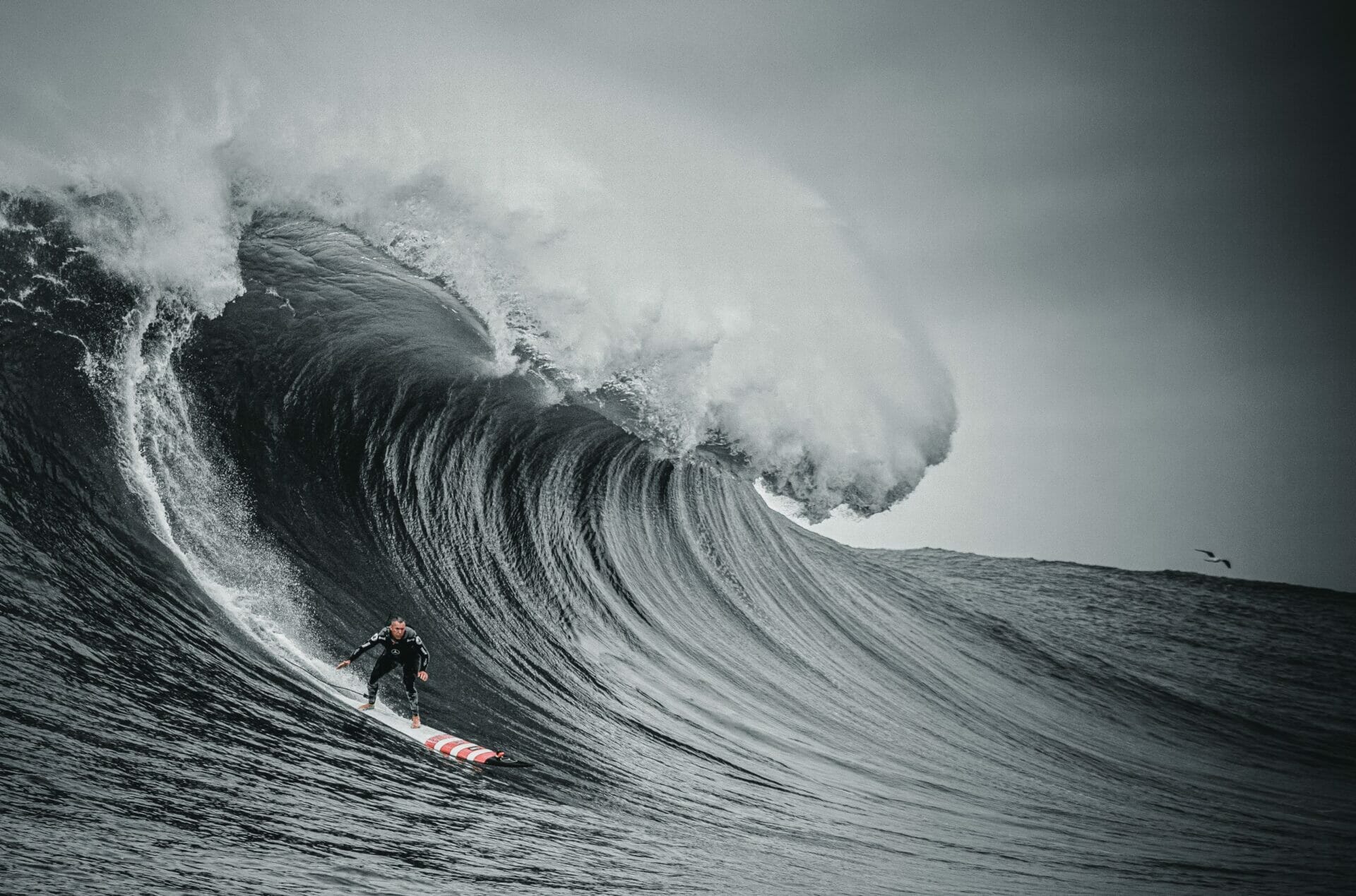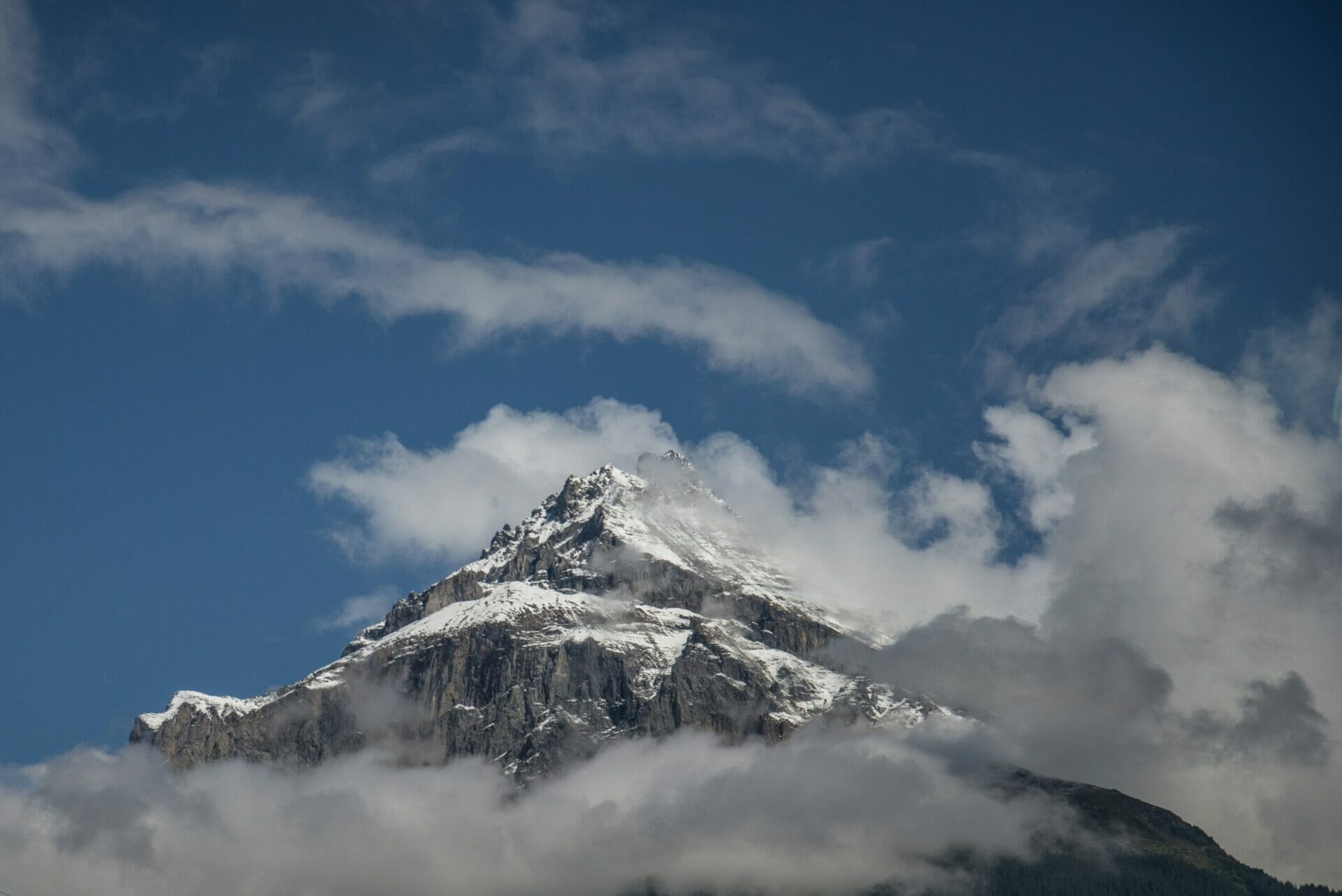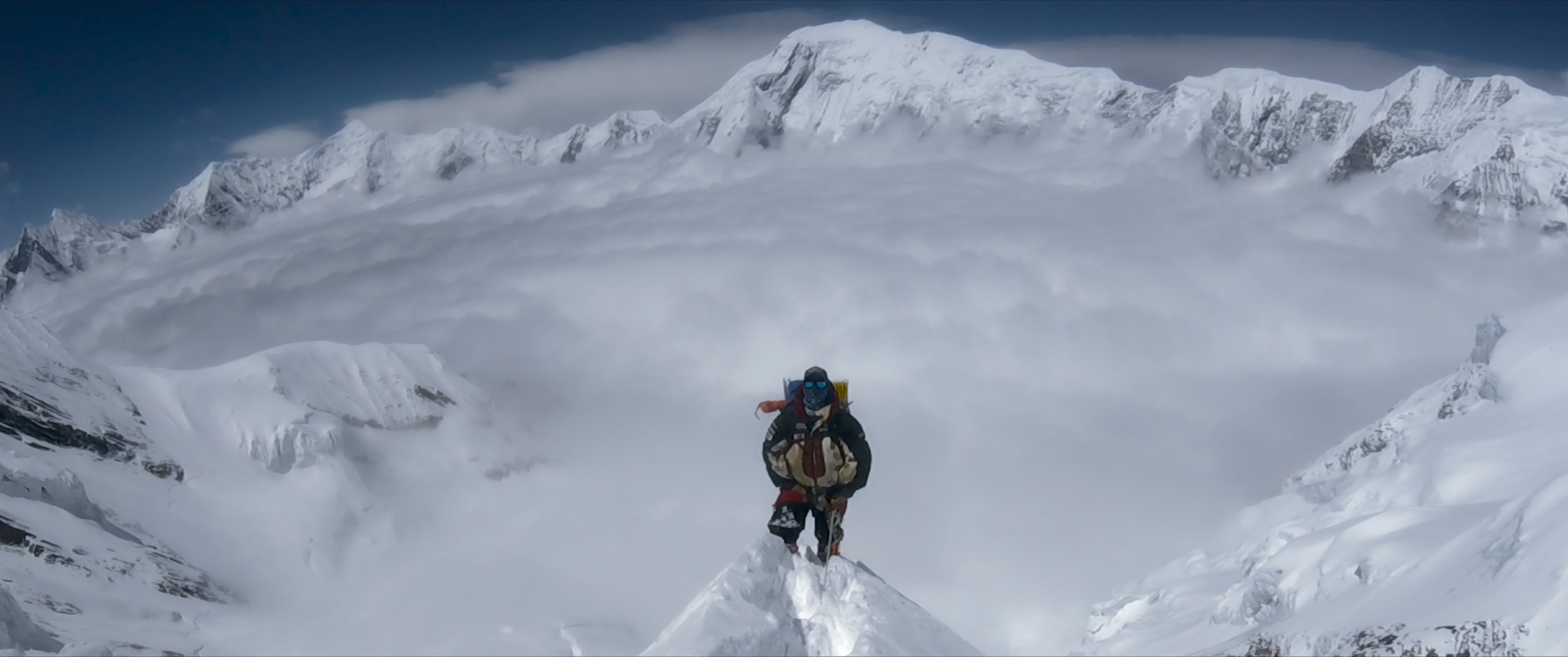
Project Possible 14/7 | All the 8,000 meter mountain peaks in seven months
Event
Length
Winner-Podium
Other protagonists
Year
If I can stay alive, I can do this in 7 months.
When Nirmal Purja showed up in 2019 with his idea, everybody thought he was crazy. Up until that point, the Western climbing world hadn’t even heard his name before. But since his Project Possible 14/7, that has all changed.
Extreme, bold and dangerous. Since the beginning of Project Possible 14/7, depicted in the Netflix documentary 14 Peaks: Nothing Is Impossible, it was always a borderline plan, a reckless challenge to human limits and to the Gods of the mountain: climbing all fourteen mountain peaks over 8,000 metres high in a record time of seven months. They’re known in the climbing world as ‘eight-thousanders.’ To understand the achievement, consider this: it took 14 years for legendary alpinist Reinhold Messner to complete the deed. The most recent record was 7 years. No one even thought about doing it as a speed challenge.
Nirmal “Nims” Purja made it in 6 months and 6 days. And after the success of the Academy Award-winner Alex Honnold’s Free Solo the world has started to discover the universe of real alpinism.
Life or death quest
I was told my plan was impossible. So I decided to call it Project Possible.
Nirmal Purja
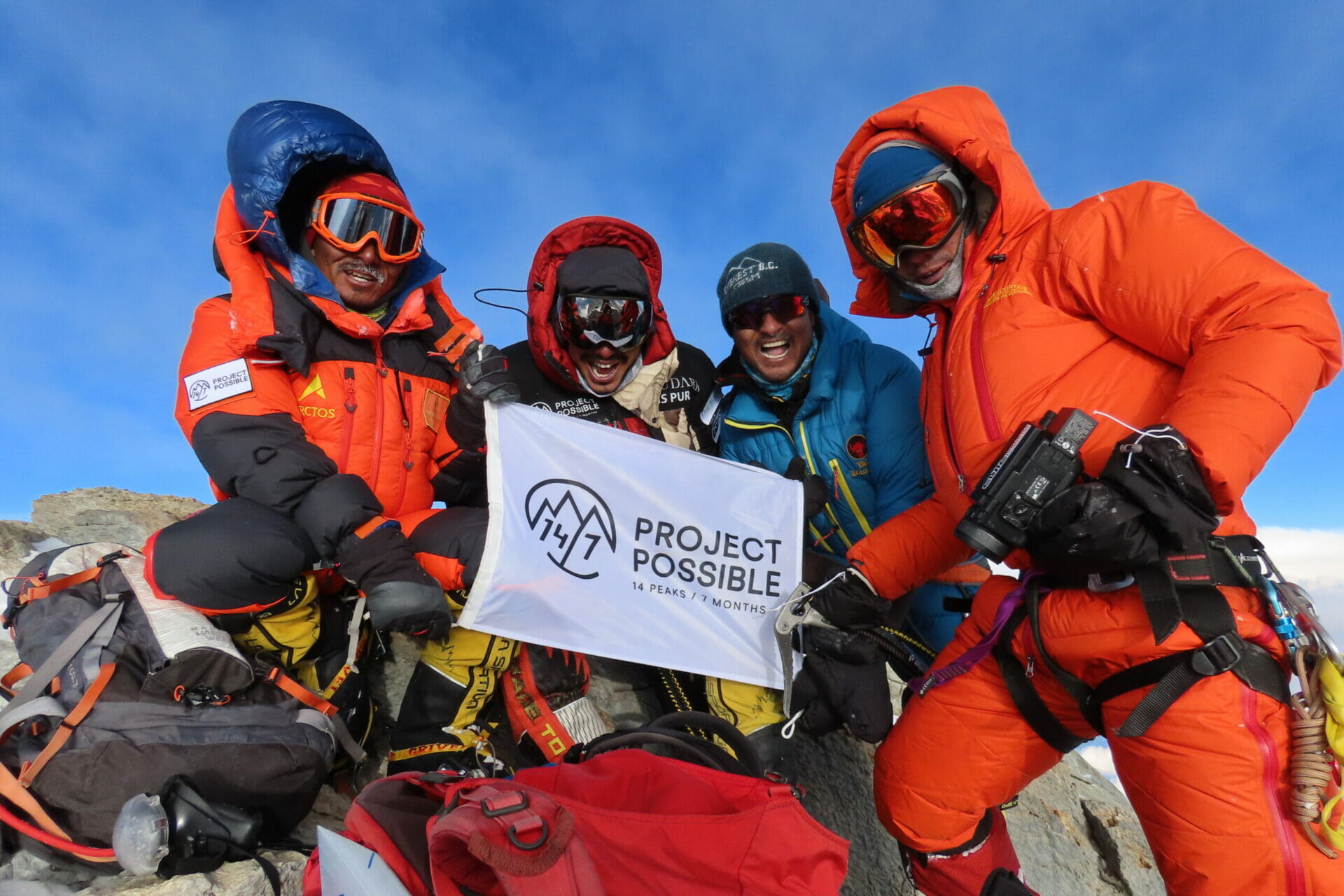
Nims Purja was a Gurkha, a Nepalese soldier who joined one of the Gurkha regiments in the British army, and then became the first Nepalese soldier to pass the extremely grueling selection course and join the British Royal Navy’s Special forces unit, the Special Boat Section, or SBS. Despite being shot by a sniper in action in 2013, he left the military to concentrate on his climbing career. Born into a poor family in Nepal’s Myagdi district, and very devoted to his mother, Nims followed in the footsteps of his father, who was a Gurkha as well, as were three of his older brothers.
But as he started climbing in 2012, something different started to push his will when, in 2018, he decided to give his unforeseeable life a change.
He resigned from the army, remortgaging his house in order to dedicate his life to a personal crazy project: Project Possible 14/7. Together with a team of trusted Nepalese Sherpas climbers, he started to plan the 14 eight-thousanders ascents. The hard training program he needed to approach the peaks showed something clear: Nims’ physiology is simply different. Naturally gifted, he has more oxygen available for the muscles, meaning that he doesn’t lose lucidity under extreme physical stress.
A Dangerous Schedule
Project Possible 14/7 was divided into 3 phases: Nepal – 6 peaks (among which were the famous Mount Everest and Annapurna), Pakistan – 5 peaks (including the K2), and China/Tibet – 3 peaks with the not-so-easy-to-get permission to climb from the Chinese government.
The schedule was challenging in the extreme. Most people usually climb an 8,000-meter mountain in stages. You get to Camp 1, and sleep over there. Camp 2, you sleep. Camp 3, Camp 4 and so on, until the summit. But because of the weather window, Nirmal’s team had to climb Kanchenjunga in just one day. Also, the statistics were clear and merciless: for every three climbers that make it to summits like Annapurna, one dies trying.
The Oxygen Debate
To oxygenize or not? The debate rages. Once a climber passes the height of 8,000 metres, or 26,000 feet, they’re in the so-called Death Zone. They’re breathing a third of the oxygen they have at sea level. The biggest danger in climbing with oxygen is becoming dependent on it. And if they run out, and they’re not acclimatised, they die.
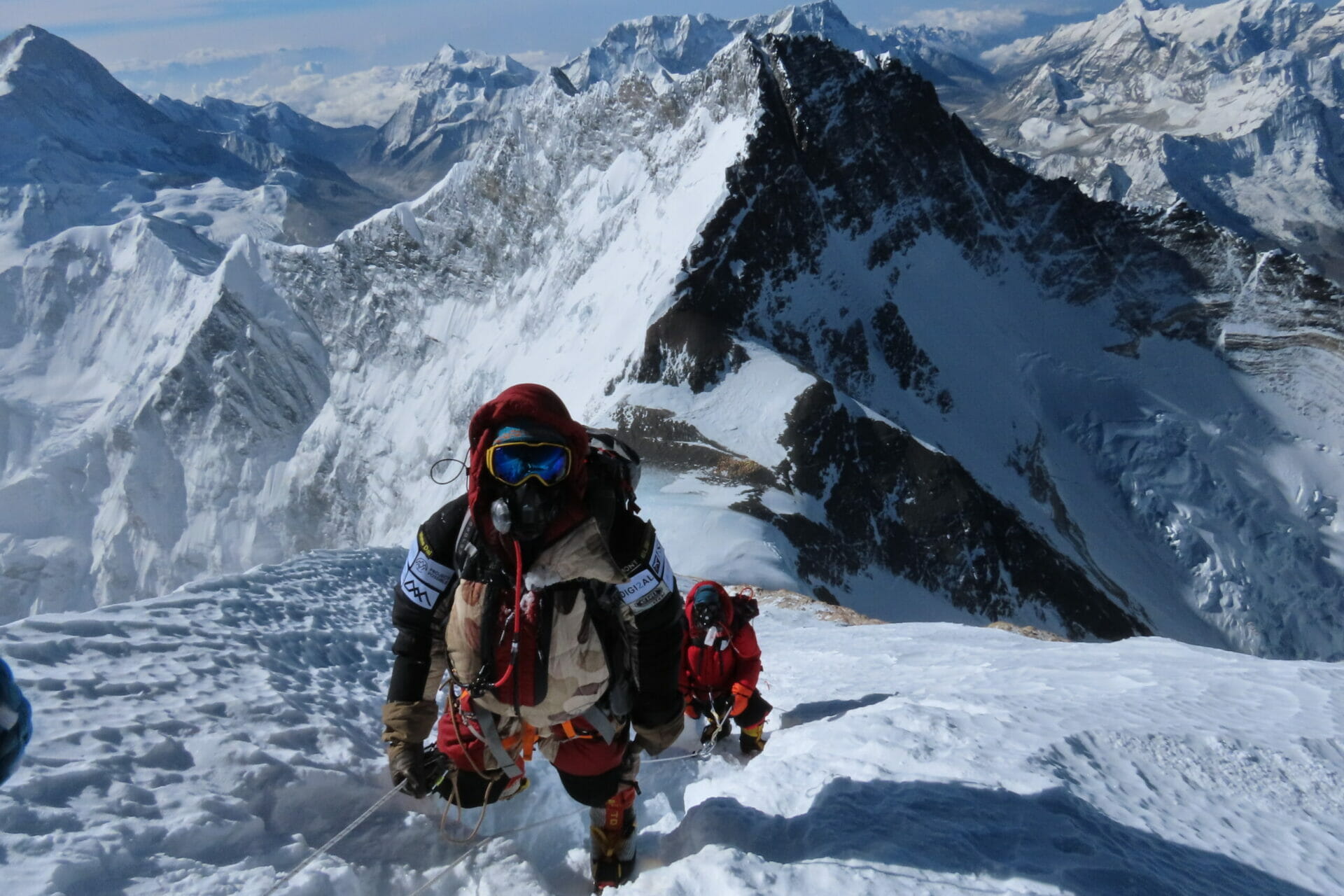
Purists say that climbing should be done in full Alpine Style, without oxygen. Nims’ Team climbed in a hybrid style, using oxygen only above 8,000mt. But they were also carrying all their equipment and supplies. And they were doing 14 peaks in 7 seven months. It’s difficult to make a comparison with the previous expeditions, which did not treat it all as a time challenge. In response to people who criticized Nims, Reinhold Messner himself said: “I like people that do, not people that talk.”
Whatever it takes?
Descending Kanchenjunga, Nims’ team found another climber who had run out of oxygen, 100 meters from the peak (8,586 mt). As a soldier, Nims knew the drill: no man is left behind. They started to carry him slowly to Camp 4, giving him their own oxygen.
They tried to reach help via radio from Camp 4, but nobody answered. After 11 hours without oxygen at that altitude, Nims started developing HACE (High Altitude Cerebral Edema) but in the end, they made it to Camp 4, saving the lost climber’s life. Project Possible continued.
The Everest Queue
On May 23, 2019, Nims Purja posted a photo of a queue of climbers near Everest’s peak. The media reported it widely. The weather window had pushed 400 climbers, plus their 400 sherpas, to try for the Everest summit. Nims and his team were already descending the peak when they met them.
Among the climbers were professional people who had paid up to 80,000 dollars so that Sherpas could carry all of their equipment for them, but Nims and his team had to carry it all by themselves, dependent on their strength. Purists think that alpinism is something extreme and painful. It’s supposed to be physical and spiritual, something that changes you when you get back.
So, it’s kind of like the quest for the holy grail. Well, you know, who gives a shit what the holy grail is. It’s the quest is what’s important.
Yvon Chouinard

Not just Sherpas: a change of perspective
The mountain doesn’t say you are black, you are white, you are weak, you are strong. It’s one rule for everybody. If you give up, you die.
Nirmal Purja
This is a different story. You usually think of Sherpas as the local Nepalese guys who help the foreign climbers to carry their heavy backpacks and supplies. That’s why Nims Purja’ story completely changed the perspective. Nims’ team was composed of Sherpas, but they weren’t just there to help some Western climbers to achieve their goal.
This time they are the protagonists. Nims Purja’s exploit and the powerful narration of Netflix’s documentary, gave credit to all the under-appreciated and under-recognized Nepalese Sherpas climbers who really do the job. This is also their moment.








